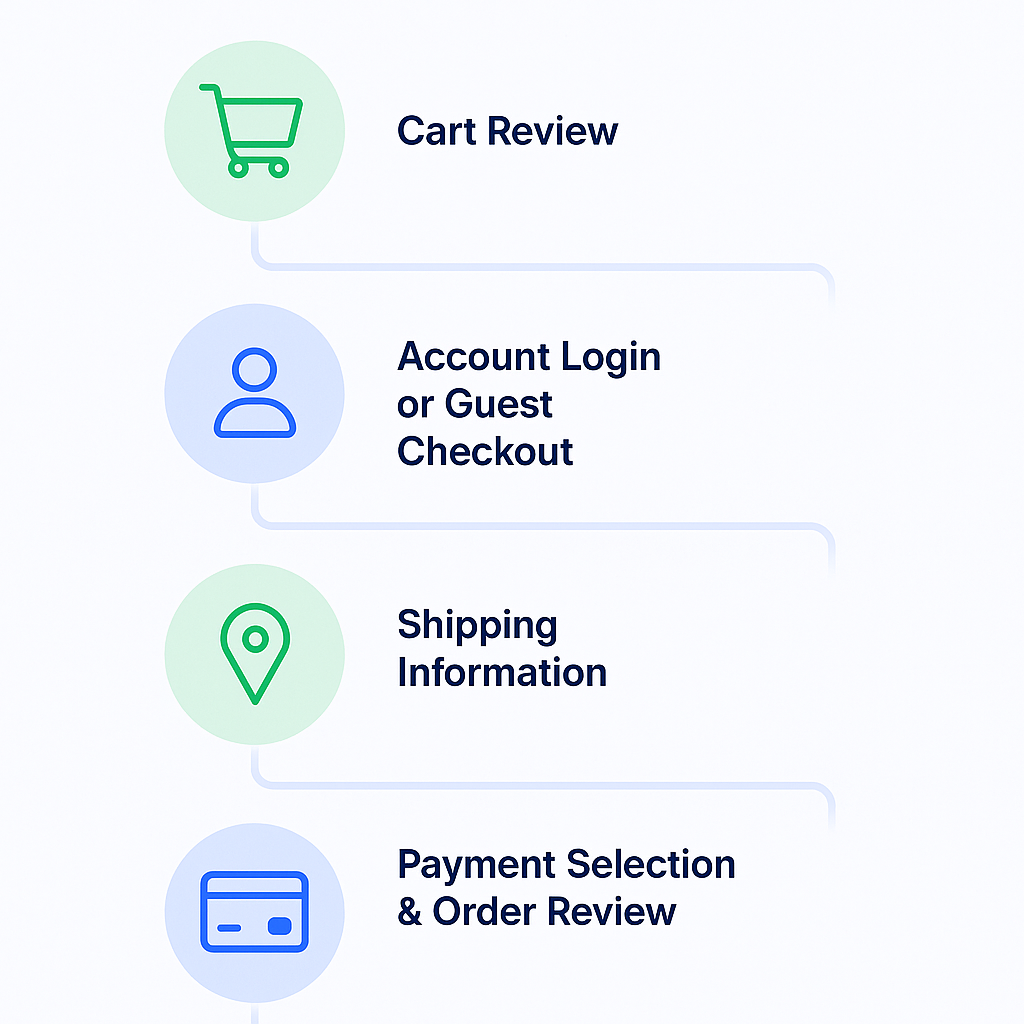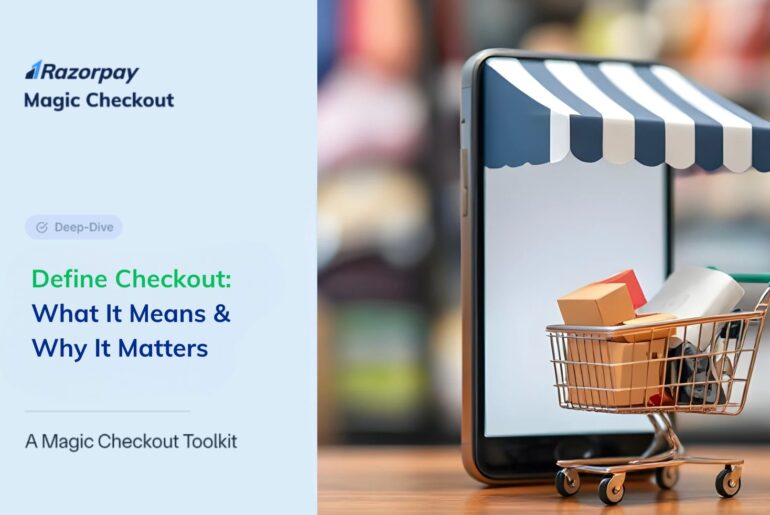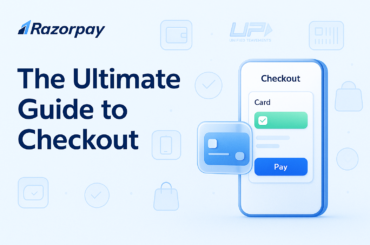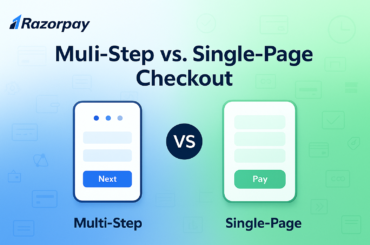Table of Contents
Define Checkout: What Is Checkout in E-Commerce?
Checkout in e-commerce marks the moment when a customer confirms their order and proceeds with payment. It’s the last, and most crucial, touchpoint before a sale is completed.
Imagine a shopper ready to buy a Rs. 2,000 product, only to be stopped by an unexpected login prompt or a slow-loading page. This is where many conversions are lost. A well-designed checkout process builds trust, minimizes friction, and helps ensure customers complete their purchase instead of abandoning their cart.
Why Does It Matter to Clearly Define Checkout in E-Commerce?
Checkout plays a direct role in driving revenue, building trust, and influencing customer loyalty. Here’s why an efficient checkout process is essential:
- Reduces Cart Abandonment: Nearly 70% of online shoppers abandon their carts, often due to slow or complicated checkout flows.
- Boosts Conversion Rates: A fast, frictionless checkout nudges users to complete their purchases without hesitation.
- Enhances Customer Trust: Secure payment gateways, trust badges, and transparent pricing reassure customers at the most sensitive stage.
- Encourages Repeat Purchases: A smooth and hassle-free checkout experience increases the likelihood of returning customers, improving customer lifetime value (CLTV*).
Even minor enhancements in your checkout flow can lead to noticeable increases in revenue and long-term customer loyalty.
🟡 Important Read: Want to go beyond the basics and fully optimize your checkout flow? Explore this comprehensive blog on creating a seamless, high-converting checkout experience.
Understanding the Checkout Process
The checkout process is a sequence of steps that take a customer from cart review to payment confirmation. While the design may vary across platforms, the goal stays the same: reduce friction and drive successful order placement.
 Here’s how a typical e-commerce checkout works and how to optimize each step:
Here’s how a typical e-commerce checkout works and how to optimize each step:
1. Cart Review

At this stage, customers review their selected products, adjust quantities, and check the total cost.
Key optimizations include:
- Clear product summary (name, image, variant, quantity, pricing breakdown)
- Easy edit options (add/remove buttons, visible “Remove” link)A simple “+” or “-” button for adjusting the quantity and a visible “Remove” option streamline modifications.
- Estimated delivery date shown upfront
- Visible promo code field (auto-apply where possible)
- Total savings highlighted clearly
2. Account Login or Guest Checkout

Customers choose how to proceed: log in, sign up, or check out as a guest.
- Returning Customers: Pre-fill saved details to reduce effort
- New Customers: Avoid forcing sign-up before purchase
- Guest Checkout: Critical to reduce abandonment (can offer account creation post-purchase)
3. Shipping Information

Users provide delivery details and choose their shipping method.
- Auto-Fill Address Fields: AI-powered predictive address entry helps reduce typing time, minimize errors, and speed up the process.
- Real-time shipping costs shown before payment
- Delivery date estimates based on pin code/method
- Multiple delivery options (standard, express, same-day)
4. Payment Selection & Order Review

Buyers choose a payment method and confirm order details.
Optimize for:
-
Multiple payment modes: Cards, UPI, wallets, BNPL, COD
-
Security trust signals: SSL, PCI-DSS, secure badges
-
Saved methods for one-click checkout (for logged-in users)
-
Transparent pricing with itemized costs before payment
5. Order Confirmation & Post-Purchase Experience

After payment, buyers get confirmation and next steps.
Optimize for:
-
Instant confirmation page + email/SMS
-
Order tracking links with real-time updates
-
Easy customer support access (chat, help desk, WhatsApp)
-
Visible return/refund policy
-
Loyalty incentives: Discount codes, reward points, product recommendations
Types of Checkout Flows
Once you define checkout clearly for your business model, choosing the right flow becomes easier. The right checkout flow depends on your business model, product complexity, and customer behavior. The goal? Reduce friction and guide users from cart to confirmation effortlessly.
Guest Checkout
Guest checkout allows customers to complete their purchases without creating an account. It is ideal for first-time buyers who want a quick and hassle-free transaction.
Ideal for: Fewer barriers = faster conversions.
🔹 Key Features:
✅ No forced sign-up
✅ Basic info collection (name, email, address)
✅ Faster order completion
✅ Option to create an account after purchase
One-Click Checkout
One-click checkout is the fastest and most seamless checkout experience, offering a repeat-like shopping experience even for first-time visitors. It eliminates manual data entry by pre-filling shipping and payment details, enabling purchases with a single click.
Why it works: Reduces steps from 5 to 1, especially on mobile.
🔹 Key Features:
✅ Auto-filled contact, shipping, and payment info
✅ Single-tap payment confirmation
✅ Multiple payment methods supported — UPI, credit/debit cards, wallets (e.g. Paytm, PhonePe, Google Pay), EMI, and BNPL
✅ Smart coupon application for savings
✅ RBI-compliant security (tokenization, encryption)
✅ Fully mobile-optimized
Multi-Step Checkout
The traditional flow, split across a few pages. Best for businesses with complex shipping/payment needs or regulated industries.
Why it works: Helps structure user input and reduce overwhelm.
🔹 Key Features:
✅ Guided steps: cart → shipping → payment → confirmation
✅ Progress indicator to show remaining steps
✅ Multiple shipping/payment options
✅ Inline product recommendations (cross-sell/upsell)
✅ Auto-fill + address validation for speed & accuracy
How to Optimize Your Checkout Process
Measuring Checkout Performance
To optimize your checkout experience and maximize conversions, tracking key performance metrics is crucial. These metrics provide insights into friction points and help identify areas for improvement.
Cart Abandonment Rate
What It Measures:
The percentage of users who add items to their cart but leave without completing the purchase.
📊 Formula:Cart Abandonment Rate = (1 - (Completed Checkouts ÷ Carts Created)) × 100
📈 Industry Benchmark:
~70% average cart abandonment rate across e-commerce (Baymard Institute).
Why It Matters:
A high abandonment rate indicates that something is preventing users from finishing the purchase—often hidden fees, forced account creation, or a poor UX.
💡 How to Improve:
-
Enable Guest Checkout and One-Click Checkout to reduce friction.
-
Display total costs upfront to eliminate last-minute price shock.
-
Use exit-intent popups offering discounts or shipping deals.
-
Optimize for fast load times—especially on mobile.
Checkout Completion Rate
What It Measures:
The percentage of users who begin the checkout process and successfully complete their order.
📊 Formula:Checkout Completion Rate = (Completed Checkouts ÷ Checkout Sessions Started) × 100
📈 Industry Benchmark:
~45–55% is a healthy average (depending on industry and product type).
Why It Matters:
A low rate suggests users are dropping off mid-checkout due to complex steps, limited payment options, or page errors.
💡 How to Improve:
-
Minimize steps in the checkout flow (consider one-page or one-click checkout).
-
Ensure the process is mobile-friendly and responsive.
-
Offer a wide range of secure payment options.
Average Order Value (AOV)
What It Measures:
The average revenue generated per order.
📊 Formula:AOV = Total Revenue ÷ Number of Orders
📈 Industry Benchmark:
Global average AOV ranges from $70–$120, depending on the sector (source: Shopify 2024 data).
Why It Matters:
A higher AOV means each transaction is more profitable, often indicating successful upselling and customer trust.
💡 How to Improve:
-
Add AI-powered product recommendations (cross-sells & upsells).
-
Offer free shipping thresholds (e.g., “Spend ₹500 more for free shipping”).
-
Promote Buy Now, Pay Later (BNPL) options to encourage larger purchases.
Conversion Rate
What It Measures:
The percentage of total website visitors who complete a purchase.
📊 Formula:Conversion Rate = (Total Orders ÷ Total Visitors) × 100
📈 Industry Benchmark:
2.5%–3% is considered a strong average for most e-commerce sites.
Why It Matters:
Your conversion rate reflects the effectiveness of your entire funnel—product discovery, cart, and checkout.
💡 How to Improve:
-
Add trust signals like SSL badges, reviews, and testimonials.
-
Pre-fill returning customer data for faster checkout.
-
Run A/B tests to determine the most effective layout, flow, or CTA language. For example, test a single-page checkout versus a multi-step flow to identify which yields higher completion rates.
Fixing the Real Problem: Your Checkout Flow
Even with great offers and a smooth UX, an unoptimized checkout flow remains the biggest conversion killer in e-commerce. If the checkout process feels long, complex, or clunky, shoppers drop off, often just seconds away from completing the purchase.
Why a Better Checkout Flow Matters
⏱ Speed = Sales: Reducing checkout time by even 5 seconds can significantly increase conversions.
🔁 Fewer Steps, Less Friction: Pre-filled fields and one-click checkout reduce mental effort and abandonment.
📉 Lower Abandonment Rates: A simplified flow encourages more users to follow through on purchases.
How Magic Checkout Reduces Friction
🔹 5× Faster Checkout
Auto-fills customer details and enables one-step login for returning users.
🔹 12+ Gamified Promotions
Supports multiple coupon types and personalized discounts to boost engagement and drive urgency.
🔹 COD Intelligence & RTO Protection
Predicts and manages high-risk orders to reduce return-to-origin (RTO) losses, especially for cash-on-delivery.
🔹 Widest Payment Coverage
From UPI and credit cards to BNPL, EMI, wallets, and COD—let users pay however they prefer.
💡 Proven Results: Brands using Magic Checkout report significantly reduced cart abandonment and faster checkout completion.
Case Study – Barosi
After implementing Magic Checkout, Barosi streamlined their checkout flow and reduced friction in real time. Their cart abandonment rate decreased, driving a 35 % increase in order conversion rate. 🌟
Final Thoughts
When you define checkout as a strategic part of your e-commerce funnel, its impact becomes crystal clear. It is not just the final step in the journey but a critical growth lever that affects conversions, revenue, and customer satisfaction.
Forward-thinking brands simplify the checkout experience with features like guest checkout, one-click payments, mobile optimization, and flexible payment methods.
💡 Pro tip: A great checkout experience does more than close the sale. It earns trust, builds loyalty, and strengthens your brand’s reputation.
Related Reads
Guest Checkout: The Key to Reducing Friction in Online Purchases




